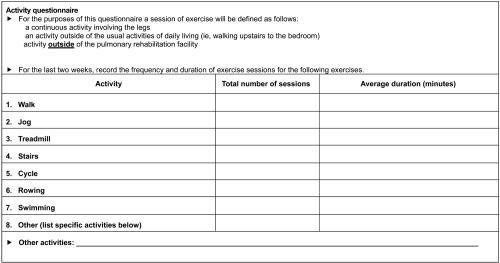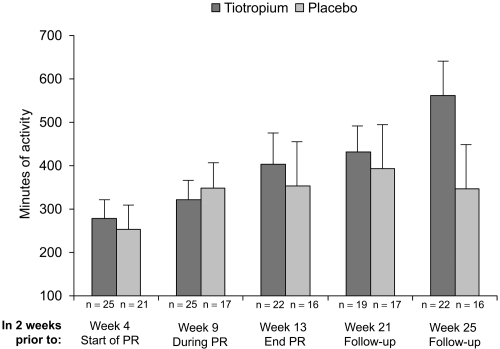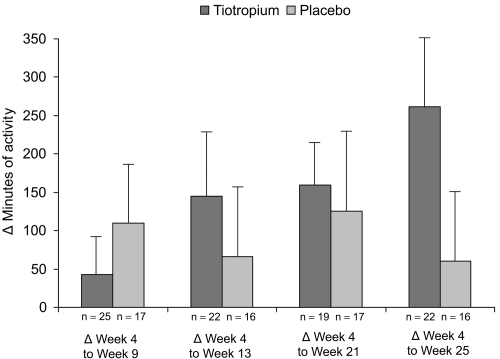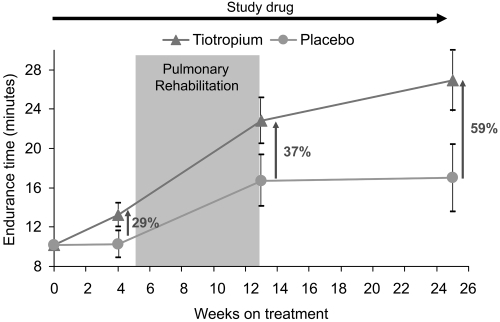Figures & data
Figure 1 Study design of 25-week randomized, controlled trial of tiotropium in COPD patients receiving pulmonary rehabilitation.
Notes: *Spirometry, Baseline/Transitional dyspnea index, and St. George’s respiratory questionnaire also performed.

Figure 2 Contents of activity questionnaire administered to COPD patients participating in the trial.

Table 1 Patient demographics and baseline characteristics of the full cohort (n = 108) and for the activity questionnaire (AQ) subgroup (n = 46)
Table 2 Respiratory medications (proportion of population) used at any time during the trial period according to treatment group for the full cohort (n = 108) and the activity questionnaire (AQ) subgroup (n = 46)
Figure 3 Mean (SE) minutes of activity during 2 weeks prior to each visit as reported through the activity questionnaire. Although not significantly different by statistical analysis, patients receiving tiotropium reported approximately 216 minutes more physical activity as compared with patients receiving placebo at week 25.

Table 3 Mean (SE) duration of patient reported participation in physical activities outside of the pulmonary rehabilitation program in the treatment groups
Figure 4 Mean (SE) difference in duration of activities from week 4 (prior to pulmonary rehabilitation) to subsequent visits as reported through the activity questionnaire. Patients receiving tiotropium reported on average 262 minutes more exercise at the end of the study whereas patients receiving placebo reported a gain of only 60 minutes.

Table 4 Mean (SE) duration of each activity in treatment groups
Figure 5 Mean (SE) endurance times resulting from the combination of tiotropium and pulmonary rehabilitation in the subgroup of patients who completed the activity questionnaire. Patients receiving tiotropium continued to increase their measured exercise endurance during the 12-week period following pulmonary rehabilitation.
